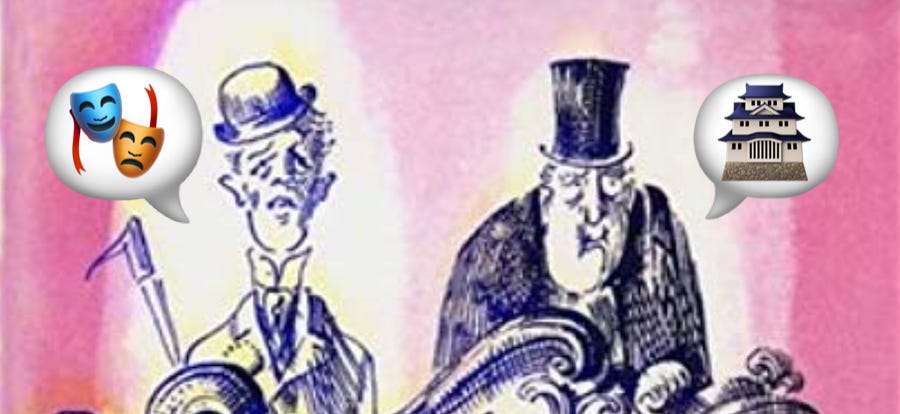
You should hope people wonder why there isn’t a statue of you rather than wonder why there is one. So said Cato the Elder, who never had the chance to visit Boca Raton’s Royal Palm Plaza and gaze up at the brass figures of Addison Mizner and his pet monkey, Little Johnnie Brown.
Mizner imagined this South Florida city on a swamp as “a happy combination of Venice and Heaven, Florence and Toledo, with a little Greco-Roman glory and grandeur thrown in,” which explains why his family name appears all around town. And he was assuredly a rascal, a man who aspired to become what his family regarded as “the lowest form of long-haired, flowering-cravat ass extant” and the sort of guy who really only deserves a statue if it includes a monkey.
An architect without credentials or the ability to draw a blueprint, Mizner nonetheless created what biographer Alva Johnston called the “Bastard- Spanish- Moorish- Romanesque- Gothic- Renaissance- Bull- Market- Damn- the- Expense Style.” His competitors nicknamed his town Beaucoup Rotten and spread the false rumour that he once built a two-storey villa without a staircase. (The stairs were in an attached tower on purpose, apparently.) At his side throughout his career was his younger brother Wilson, the flam man to his flim man. Wilson Mizner was a playwright as Addison was an architect; both might have listed the professions on their income tax, though neither was the type to pay taxes. (When Wilson was asked why he chose to write plays, he responded “strict vagrancy laws.”) Together, they lied, swindled, speculated, cajoled, entertained, and became famous as wits in an era when “high and low life joined hands to exclude the pedestrian middle.”
Before he fell into architecture, Addison had joined a group of San Francisco literary types to crank out The Cynic’s Calendar, a collection of inside-out proverbs for a wit-starved nation. The 1904 bestseller contained such japes as:
“Where there’s a will, there’s a lawsuit.”
“The wages of gin is breath.”
“Many are called but few get up.”
“A word to the wise is resented.”
“Indiscretion is the better part of pallor.”
With two plays to his name, Wilson’s literary bona fides were more established, and he’s been credited with a couple of phrases so familiar it’s surprising (and suspect) to hear they have an author:
“When you steal from one author, it’s plagiarism; if you steal from many, it’s research.”
and
“Be nice to people on the way up because you’ll meet them on the way down.”
Better still was his description of Hollywood as “a trip through a sewer in a glass-bottom boat” and of one studio executive as having oilcloth pockets so he could steal soup.
Ultimately, the secret to both Mizners’ success was the same: A terrific biographer. Alva Johnston wrote a series of frothy New Yorker profiles of the brothers, eventually collecting them into a “magnificent album of rascality in the modern world.” So enchanting was Johnston’s tale that it enticed both Irving Berlin and Stephen Sondheim to buy the rights; Berlin never did anything with them, while Sondheim revised their story through the names Wise Guys, Bounce, and Road Show but by critical consensus never quite nailed it.
After Boca went bust and Addison was on his deathbed in 1933, Wilson sent him a telegram that read:
“Stop dying. Am trying to write a comedy.”
Addison died a few hours later, but before then he responded:
“Am getting well. The comedy goes on.”
Quick quips; lightning
“The more things a man is ashamed of, the more respectable he is.”
— George Bernard Shaw
Which says buckets in our post-shame era.
“The physician can bury his mistakes, but the architect can only advise his client to plant vines.”
— Frank Lloyd Wright
And what are tears but falling water?
“If a thing is worth doing, it is worth doing badly.”
— G.K. Chesterton
Just as true as its opposite.
The 28th issue of Get Wit Quick, a weekly serving of Architectural Indigestion, comes to you from the Mouth of the Rat. My book Elements of Wit: Mastering The Art of Being Interesting also lacks a staircase but does feature a chapter on esprit d’escalier. Illustration above by Reginald Marsh from the cover of Alva Johnston’s The Legendary Mizners. Exclude the pedestrian middle by tapping the ❤️below.



